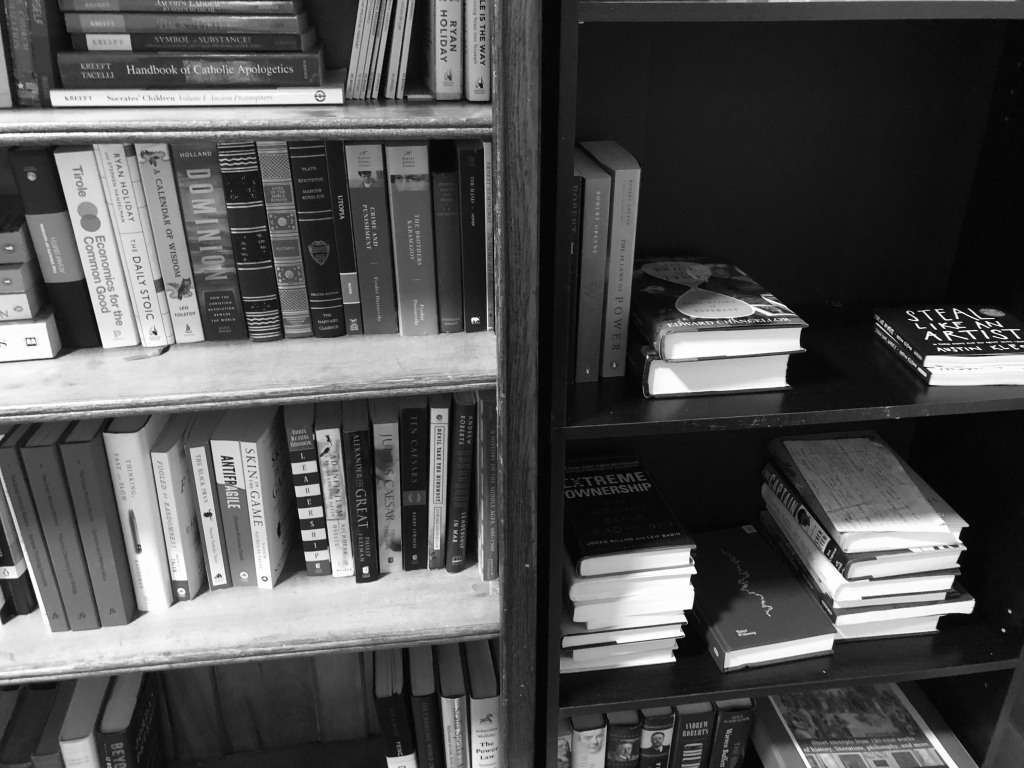I have read a book a week for over a year now.
Over the last year, my ability to chose my next book to read has improved enormously. I seem to enjoy each new book more than the last one. While some books are goldmines, many read as drawn out articles.
Time is precious. You want to ensure that every time you sit down to read you are maximizing the ROI on your time (even if this ROI remains abstract).
Here’s the five step system that has helped me filter and read better books:
Step #1: Climb up trees.
Read your favorite author’s full body of work.
Don’t stop at whatever hit the best-seller’s list. Read everything your favorite author has ever written. This may be difficult at the very beginning. However, quickly you’ll find someone’s ideas you can’t get enough of.
Austin Kleon’s advice for generating inspiration and ideas is to “climb up trees.” When you read everything an author offers you begin to notice their biggest inspirations and interests.
Climbing all the way up a “tree” is how you start accelerating a fascination flywheel.
Step #2: Start broad to go deep.
After you climb the tree, explore its roots.
Leverage books you’ve already enjoyed to lead to works that go even deeper on particular aspects. The best way to do this is to pick your next book from your current book’s footnotes.
There was a time when Ryan Holiday mandated he read at least one book from the footnotes of each book he enjoyed. Copy the practices of the most prolific readers. Let your current read become a treasure map for your next.
This becomes intellectually rewarding and motivating — how many people have deeply read 3 books on any given topic?
Step #3: Take notes to refine your tastes.
You lose 90% of a book’s value by not taking notes.
If you’re going to make reading a habit, taking notes will make sure you remember all of your favorite ideas.
I didn’t take notes starting out and I wish that I did. Once I started, my notes have gotten better and better over time which only makes the reading process more fulfilling.
Taking notes forces you to reflect on the things you like and dislike, whether you realize it or not. Do this enough and patterns will emerge.
As a result, you increase your understanding of the things that stick out the most to you.
Step #4: Leverage reliable reviews.
Use trusted reviews to inform your choices.
This doesn’t just mean how many stars it has on amazon. Utilize the in depth reviews that people leave, along with reviews from your favorite authors.
I loved the style and contents of Nassim Taleb’s Incerto series. I knew I wanted to read Niall Ferguson and Daniel Kahneman when Taleb said Ferguson is the only historian worth reading and mentioning Daniel Kahneman’s almost work every chapter. Not surprisingly, Ferguson’s Civilization and Kahneman’s Thinking Fast and Slow were two of my favorite books I’ve read this year.
Trusted reviews give you a strong second set of eyes for any potential treasure you weren’t already aware of.
Step #5: Build your anti-library.
Build your anti-library physically and digitally.
An anti-library is all the books you own but haven’t read yet. This is another system Ryan Holiday uses for book acquisition and digestion — a recommendation he himself took from Taleb’s Black Swan.
A digital anti-library would be building a massive Amazon wish list — add any book that even remotely spikes your interest. When you let books sit on a wish list it acts as its own filter for whether you’re truly interested in a topic — from “this sounds cool” to “wow I need to read this immediately.” And when you need it immediately, buy it and add to your physical anti-library.
Building a digital and physical anti-library makes starting the next book frictionless, and you’re guaranteed to enjoy whatever you select next.
Why this matters
When you have a filtering system in place for reading books, you’re left loving every book that you read and the reading flywheel only accelerates.
Maximize your ROI and enjoyment from what you’re reading—use these five steps to find better books and increase your awareness of what truly fascinates / inspires / bewilders you.

Leave a comment